Key takeaways:
- Gamification enhances student engagement and motivation, transforming tedious tasks into enjoyable learning experiences through elements like points systems, leaderboards, and badges.
- Implementing team-based challenges fosters collaboration and essential social skills, shifting focus from individual performance to collective achievement.
- Careful integration of technology and gamification tools, such as Kahoot! and Classcraft, can stimulate student interest and creativity, but it’s crucial to address potential challenges like competition and technical issues.
- Reflecting on gamification experiences helps educators fine-tune strategies, ensuring that learning objectives are met while maintaining student engagement.

Understanding Gamification in Education
Gamification in education is more than just adding game elements; it’s about creating engaging and motivating learning experiences. I remember a time when I introduced a points system for completing assignments in my class. The excitement in my students was palpable; they were suddenly eager to tackle tasks that had once felt tedious. This shift in attitude made me realize how powerful game-like elements can be in fostering a sense of achievement and community among learners.
As I delved deeper into this concept, I found that gamification taps into fundamental human drives: the desire for mastery and the joy of competition. I often ask myself, how can I harness these drives effectively? For instance, I started using leaderboards and badges, which not only fostered friendly competition but also encouraged students to take ownership of their learning. Seeing their names rise on that leaderboard sparkled a newfound determination in many; it transformed how they approached their studies, pushing them to engage more deeply with the material.
When incorporating gamification strategies, it’s essential to align them with educational objectives. I recall a project where students could earn rewards for collaboration on group assignments. The focus shifted from individual performance to teamwork, fostering essential social skills alongside academic learning. This experience highlighted to me that when gamification is thoughtfully integrated, it can create a dynamic and enriching educational environment that resonates with both educators and students alike.
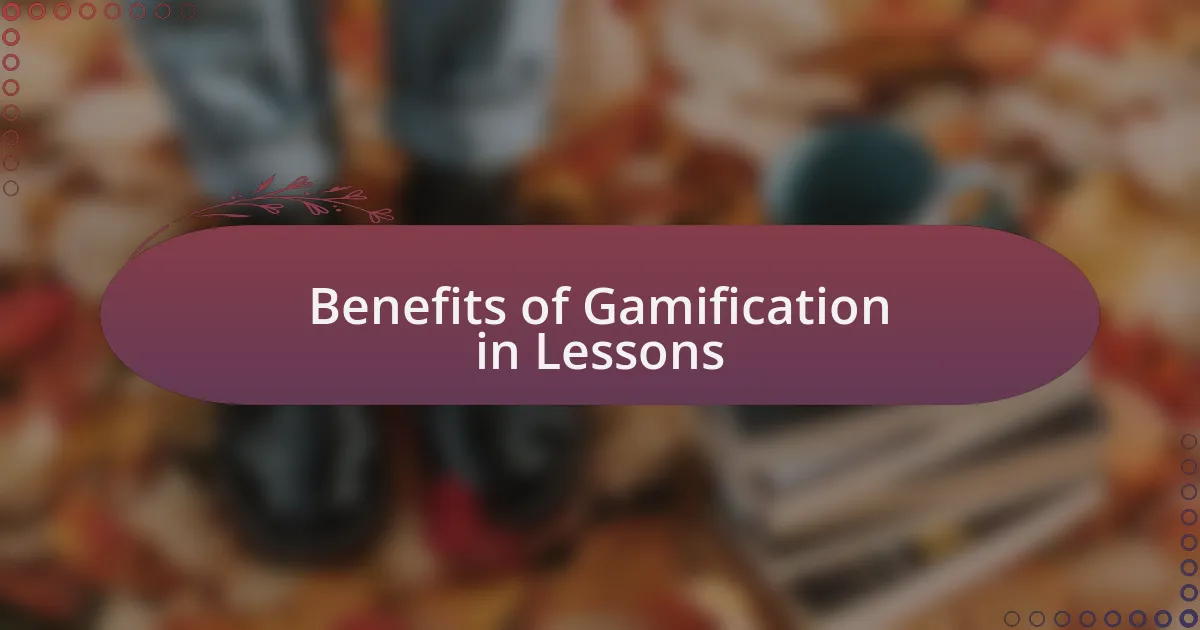
Benefits of Gamification in Lessons
In my experience, one of the most significant benefits of gamification in lessons is increased student engagement. I recall arranging a scavenger hunt where students had to solve math problems to find clues. The excitement was infectious; they were not just learning but genuinely enjoying the process. It made me wonder, could all lessons be this fun?
Additionally, gamification fosters a sense of autonomy in learners. During a project where students chose their own topics and set their own goals, I noticed a remarkable transformation. They took ownership of their learning, discussing strategies and competing against their previous best scores. This shift made me realize how empowering it is to give students a bit of control, making them more invested in their education.
Moreover, the social dynamics in the classroom can improve dramatically through gamification. I remember implementing team-based challenges that required collaboration to succeed. The sense of camaraderie that developed among students was heartwarming. It raised an intriguing question for me: how can teamwork in a game-like setting translate to real-world skills? The answer was clear—my students were not only learning content but also essential skills that they would carry with them beyond the classroom.
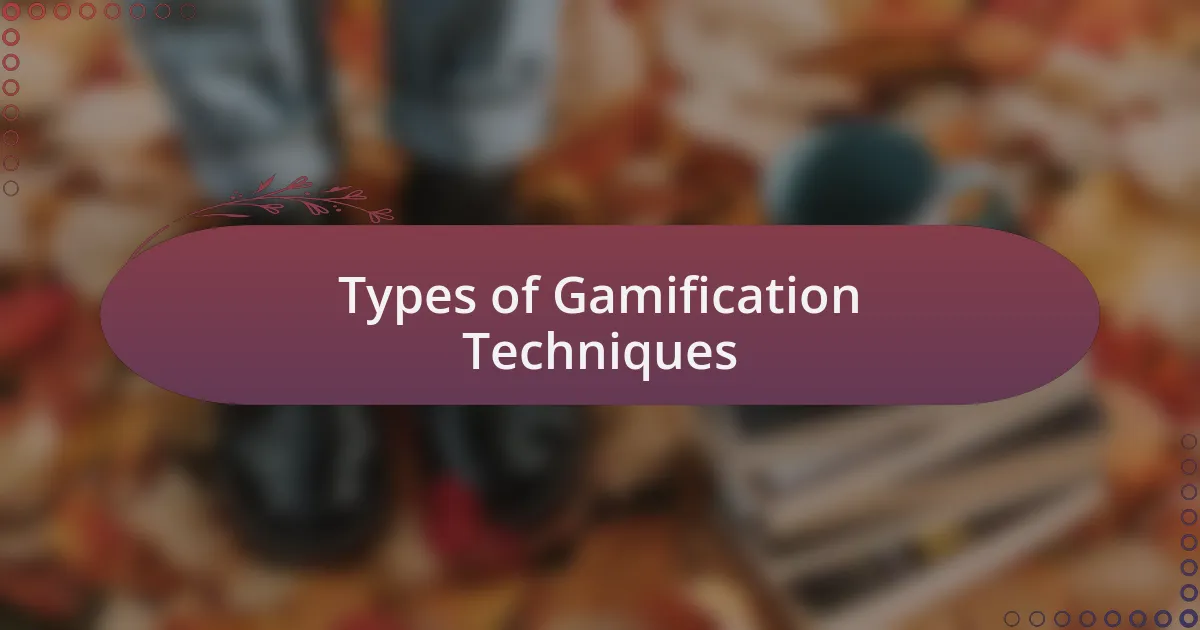
Types of Gamification Techniques
Gamification techniques can be broadly categorized into several types, each offering unique ways to engage students. One effective approach is incorporating point systems, where students earn points for completing various tasks. I vividly remember introducing a leaderboard in my classroom that displayed students’ scores. It created a playful competitive atmosphere that pushed them to go the extra mile—who doesn’t want to see their name at the top?
Another popular method is the use of badges or rewards for achieving specific milestones. I once organized a project where students could earn badges for completing assigned readings or contributing to discussions. It was fascinating to observe their reaction when they received a badge; it was as if they had unlocked a new level in a video game. This visual representation of achievement undoubtedly motivated many to strive harder. Can a simple image really spark that much enthusiasm? Absolutely!
Challenges and quests are also central to gamification techniques. In my lessons, I often designed quests that posed real-world problems for students to solve collaboratively. One time, we worked on a sustainability project where groups competed to devise the most effective solution. The energy in the room was electric, and it struck me how powerful a well-framed quest can be in shaping a collaborative learning environment. How can I replicate that sense of adventure in more subjects? Exploring various gamification strategies certainly holds the key.
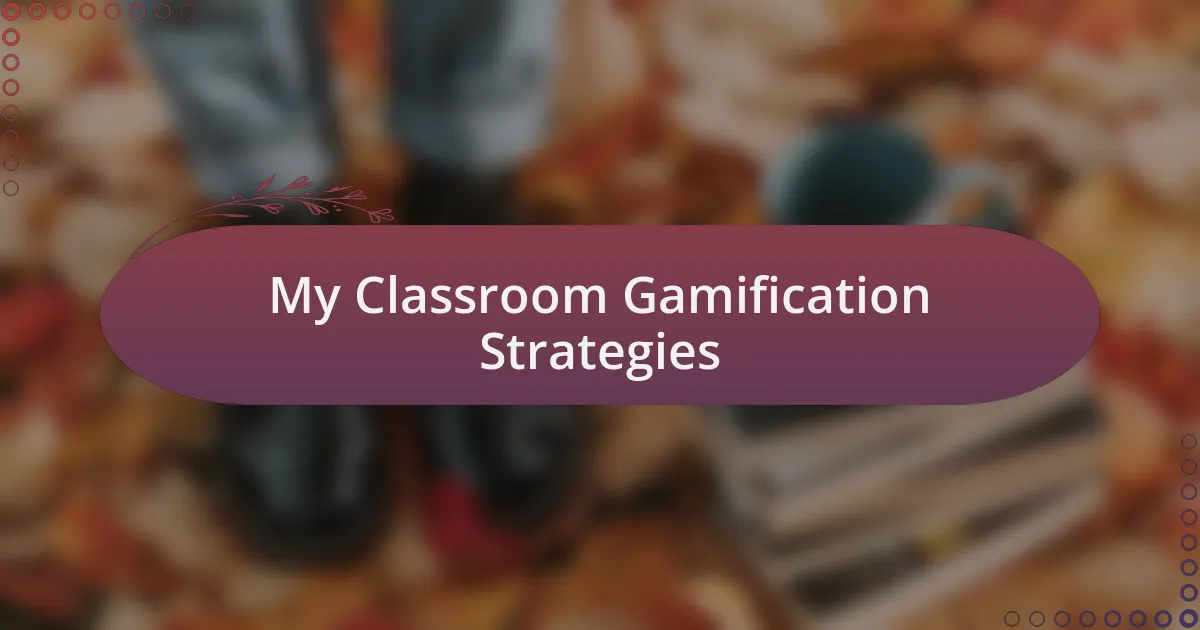
My Classroom Gamification Strategies
My journey with gamification in the classroom has led me to embrace storytelling as a strategy. During a history unit, I crafted a narrative where each student became a character in a historical event. Watching them dive into their roles was nothing short of magical. It ignited their imagination and made history feel alive. Have you ever seen students so invested in a lesson that they beg to continue? I have—in those moments, I realized the power a good story holds in education.
Another compelling strategy I implemented was team-based competitions, where groups tackled projects with specific themes. For example, in a science class, we had teams develop solutions for local environmental issues, and I incorporated a voting system for the most creative ideas. The environment was charged with excitement, and I could feel the camaraderie growing. Isn’t it incredible how collaboration can turn traditional learning into an engaging experience? The buzz reminded me that when students work together, they not only learn from the subject matter but from each other as well.
Lastly, I found that incorporating technology, such as educational apps with game-like features, has significantly enhanced student engagement. I recently introduced a platform where students could create and share quizzes. The enthusiasm to challenge each other was infectious! Watching them debate and defend their questions revealed a level of critical thinking I hadn’t expected. Isn’t it fascinating how technology can transform average lessons into captivating interactive experiences? It keeps me motivated to discover new tools and techniques that can further ignite that spark of curiosity.
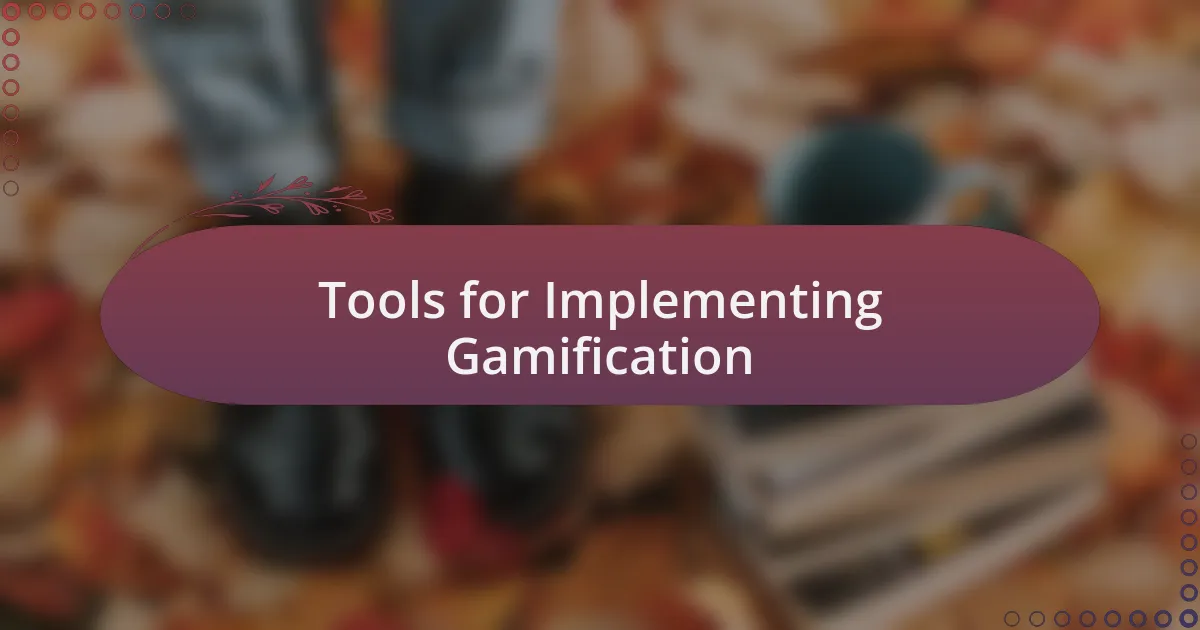
Tools for Implementing Gamification
When thinking about gamification tools, I often reflect on the impact of platforms like Kahoot! and Quizizz. I remember the first time I used Kahoot! in my classroom; the energy was palpable as students raced to answer questions on their devices. Seeing their faces light up with excitement was a reminder that learning doesn’t have to be dull—how powerful is it to see students so eager to engage with the material?
Another tool that has been invaluable in my experience is Classcraft. This unique platform integrates role-playing elements into lessons, allowing students to level up and unlock rewards based on their behavior and academic progress. It was eye-opening to witness how even the shyest students began to take on leadership roles within their teams. Isn’t it amazing how gamification can help us unlock hidden talents in our students?
Finally, I discovered the potential of application tools like Seesaw and Flipgrid. These platforms empower students to showcase their learning creatively through videos and projects. I was particularly moved when a student shared a project on Flipgrid that detailed her journey with a challenging subject. It made me wonder: could tools like this be the key to giving every voice in the classroom a platform? Their enthusiasm reminded me that learning is more than just content; it’s about connection and expression.
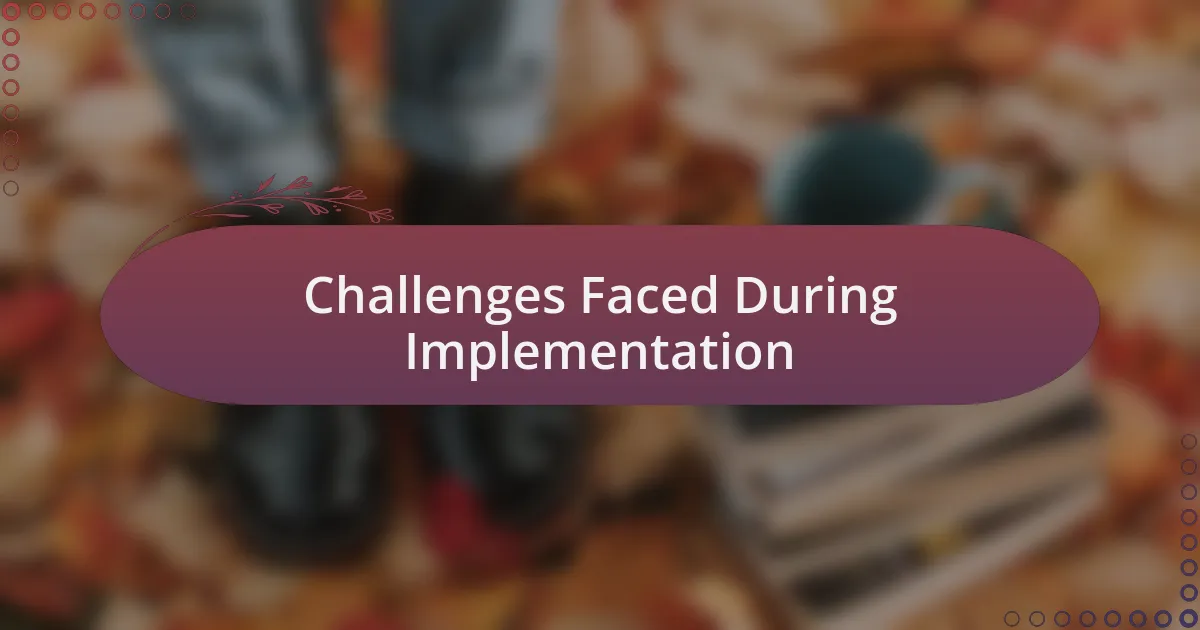
Challenges Faced During Implementation
Implementing gamification in lessons is not without its hurdles. I recall a time when I decided to introduce a point system to encourage participation. While some students thrived, others felt overwhelmed by competition, leading to disengagement among those who found the pressure too intense. Have you ever noticed how competition can create a divide instead of a bridge?
Another challenge arises with the integration of technology itself. I remember a lesson where I planned to use an interactive quiz on a new platform, only to face a technical glitch. The frustration in the room was palpable, not just from me but from the students who were excited to engage. It made me realize how important it is to have a backup plan and to think through potential technical issues ahead of time.
Lastly, another significant barrier has been balancing the fun of gamification with educational rigor. I often found myself questioning whether the activities truly enhanced learning or if they just distracted from the core objectives. For instance, I once devoted a whole lesson to a game, only to realize later that key concepts were overlooked. What’s more valuable: keeping students engaged or ensuring they grasp the material? This balancing act continues to be a learning experience for me, and I believe it’s essential to reflect on what truly serves our students best.
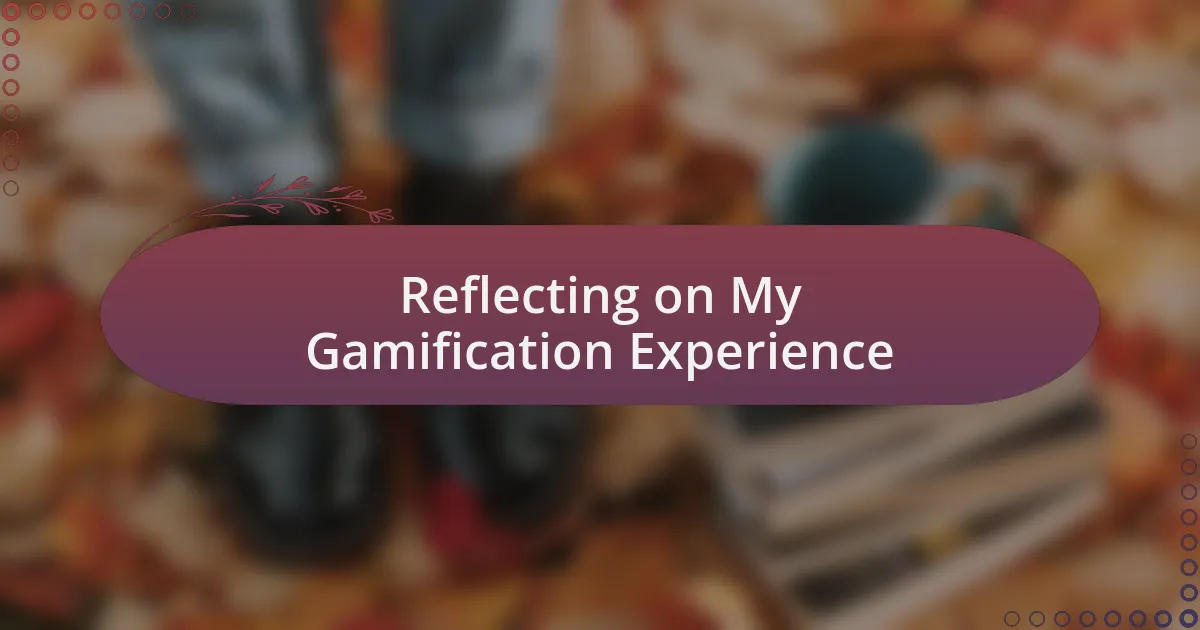
Reflecting on My Gamification Experience
Reflecting on my experience with gamification in lessons brings a blur of emotions and realizations. There was a moment when I introduced a badge system to celebrate small achievements, and to my surprise, it ignited a spark of enthusiasm. Watching students proudly display their badges felt uplifting, as if I was witnessing the birth of their confidence. Have you ever experienced that rush of joy when your efforts resonate with others?
However, my journey hasn’t always been smooth sailing. I vividly remember a session where I incorporated a leaderboard to track progress. While some students were motivated by the visibility, others felt left out and discouraged. It made me ponder: how do we strike the right balance between motivation and inclusion? Ultimately, it reinforced the idea that each student is unique and requires a tailored approach to thrive.
One key lesson I’ve gleaned is that reflection is crucial. After each gamified lesson, I take a step back to evaluate the entire experience. Did the students grasp the concepts? Were their smiles genuine, or were they merely putting on a show for rewards? This introspection has sharpened my strategies, leading me to create an environment where learning and play coexist harmoniously. Isn’t it fascinating how every experience, whether positive or challenging, contributes to our growth as educators?